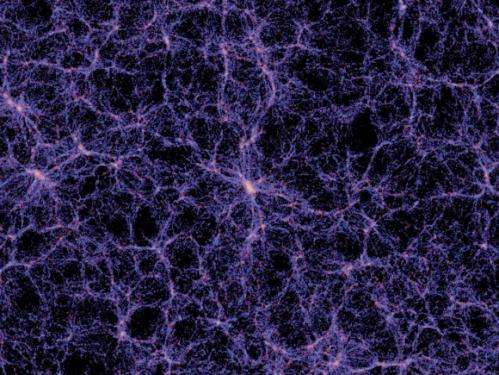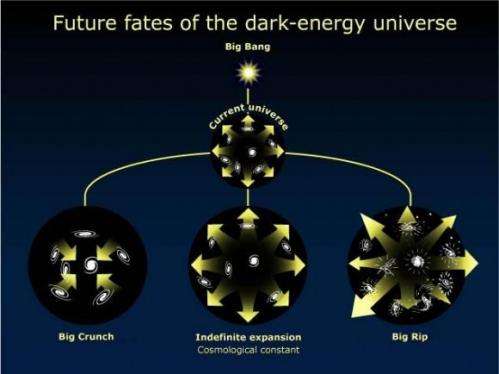Big rips and little rips

One of a number of seemingly implausible features of dark energy is that its density is assumed to be constant over time. So, even though the universe expands over time, dark energy does not become diluted, unlike the rest of the contents of the universe.
As the universe expands, it seems that more dark energy appears out of nowhere to sustain the constant dark energy density of the universe. So, as times goes by, dark energy will become an increasingly dominant proportion of the observable universe – remembering that it is already estimated as being 73% of it.
An easy solution to this is to say that dark energy is a feature inherent in the fabric of space-time, so that as the universe expands and the expanse of space-time increases, so dark energy increases and its density remains constant. And this is fine, as long as we then acknowledge that it isn’t really energy – since our otherwise highly reliable three laws of thermodynamics don’t obviously permit energy to behave in such ways.
An easy solution to explain the uniform acceleration of the universe’s expansion is to propose that dark energy has the feature of negative pressure – where negative pressure is a feature inherent in expansion.
Applying this arcane logic to observation, the observed apparent flatness of the universe’s geometry suggests that the ratio of dark energy pressure to dark energy density is approximately 1, or more correctly -1, since we are dealing with a negative pressure. This relationship is known as the equation of state for dark energy.
In speculating about what might happen in the universe’s future, an easy solution is to assume that dark energy is just whatever it is – and that this ratio of pressure to density will be sustained at -1 indefinitely, whatever the heck that means.
But cosmologists are rarely happy to just leave things there and have speculated on what might happen if the equation of state does not stay at -1.

If dark energy density decreased over time, the acceleration rate of universal expansion would decline and potentially cease if the pressure/density ratio reached -1/3. On the other hand, if dark energy density increased and the pressure/density ratio dropped below -1 (that is, towards -2, or -3 etc), then you get phantom energy scenarios. Phantom energy is a dark energy which has its density increasing over time. And let’s pause here to remember that the Phantom (ghost who walks) is a fictional character.
Anyhow, as the universe expands and we allow phantom energy density to increase, it potentially approaches infinite within a finite period of time, causing a Big Rip, as the universe becomes infinite in scale and all bound structures, all the way down to subatomic particles, are torn apart. At a pressure/density ratio of just -1.5, this scenario could unfold over a mere 22 billion years.
Frampton et al propose an alternative Little Rip scenario, where the pressure/density ratio is variable over time so that bound structures are still torn apart but the universe does not become infinite in scale.
This might support a cyclic universe model – since it gets you around problems with entropy. A hypothetical Big Bang – Big Crunch cyclic universe has an entropy problem since free energy is lost as everything becomes gravitationally bound – so that you just end up with one huge black hole at the end of the Crunch.
A Little Rip potentially gives you an entropy reboot, since everything is split apart and so can progress from scratch through the long process of being gravitationally bound all over again – generating new stars and galaxies in the process.
Anyhow, Sunday morning – time for a Big Brunch.
More information: Frampton et al. The Little Rip: arxiv.org/pdf/1106.4996v1
Source: Universe Today

















